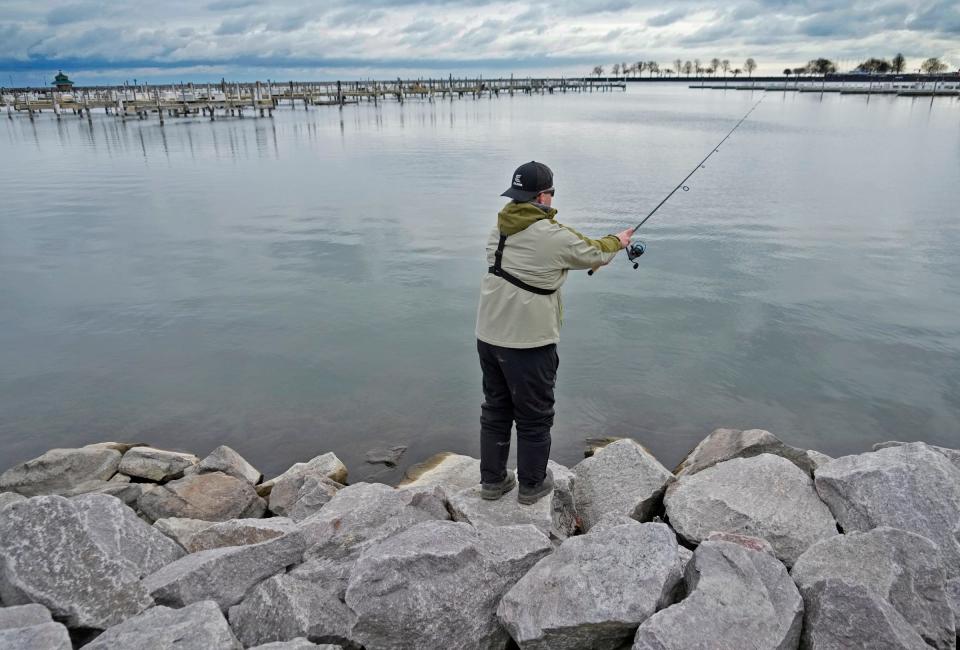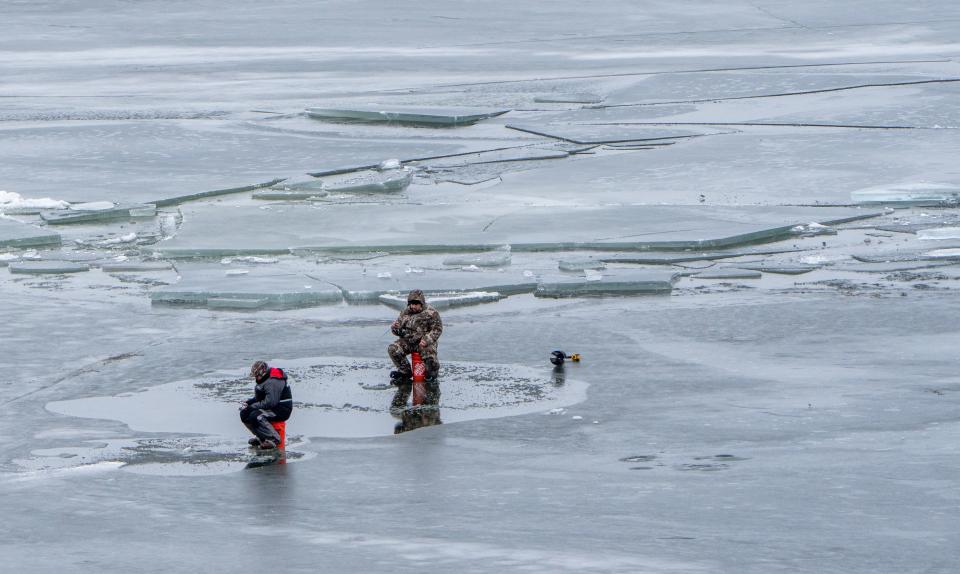Great Lakes ice cover was at record low on Jan. 1, that could still change, but the 2024 outlook is a concern
Great Lakes ice cover is off to a slow start in 2024.
On Jan. 1, average ice cover across the lakes hit a record low since scientists began keeping track a half-century ago. And as of Jan. 2, average ice cover across all five lakes, as well as Lake St. Clair, is only 0.36%. Lake Superior has the highest ice cover with close to 1%. Lakes Michigan and Huron have 0.04% and 0.05%, respectively. There is no ice on Lakes Erie, Huron and St. Clair.
Unseasonably warm air temperatures are likely to blame for this year's slow start. While it's not uncommon for ice cover to be this low in early January, the seasonal outlook predicts low ice cover will persist for the remainder of the season. Ice cover typically reaches its peak in mid-February, which on average is roughly 40%.

Ice was also slow to form last year, as the lakes were nearly ice free in mid-January. Average ice cover across all the lakes hit a historic low in mid-February. And last year's ice season was the fourth lowest in the last 50 years with an average ice cover of 6.2%. Average ice cover over the past 50 years is roughly 24.5%.
Ice cover in the Great Lakes has been declining for the past five decades, a trend that scientists say will continue. This will be met with extreme year-to-year fluctuations, evidenced by the near record lows and followed by near record highs seen in the last decade.
Sixteen of the last 25 years have had below-average ice.
Low ice cover predicted for the ice season
The U.S. National Ice Center Forecast releases a seasonal outlook at the beginning of December. This year's the ice center predicted below normal ice conditions for all five lakes. Here are the predictions for the remainder of the season:

Lake Superior: Near to slightly above normal temperatures forecast for January and February. Below normal ice conditions.
Lake Michigan: Near to slightly above normal temperatures forecast for January and February. Below normal ice conditions.
Lake Huron: Slightly above normal temperatures are expected over Lake Huron and Georgian Bay through February. Slightly below normal ice conditions are forecast.
Lake Erie: Slightly above normal temperatures are expected through February. Below normal ice conditions are forecast.
Lake Ontario: Slightly above normal temperatures are expected over Lake Ontario through February. Below normal ice conditions are forecast.
More: How does Lake Michigan affect the weather in Milwaukee?
Low ice impacts ecosystems, creates dangerous conditions
Scientists began tracking ice cover 50 years ago because it plays an important role by helping determine climate patterns, lake water levels, water movement patterns and water temperature structure. Low ice cover can upend ecosystems, disrupt the food web, create dangerous conditions along the shoreline and signal the possibility of blue-green algae blooms later in the year.

Here are some of the ways low ice cover affects the lakes:
Lake levels: Low ice cover can also lead to lower lake levels later in the summer as the lakes warm fast, which favors evaporation. But lake levels − also experiencing extreme swings due to climate change − will depend on how much rainfall the lakes get in the spring and summer.
Lake-effect snowstorms: These snowstorms occur when cold, dry air masses travel across the lakes, causing more water to evaporate off the lake. When an air mass hits land, it can dump massive amounts of snow on cities along the shoreline. These events can be deadly, as evidenced by last year's lake-effect snow events
Shoreline erosion: Ice suppresses waves during winter storms. Waves are larger when there is less ice, which can lead to lakeshore flooding and erosion.
Fish populations: Some fish, like lake whitefish, spawn in the fall and the nearshore ice protects their eggs while they incubate over the winter. Ice tempers winds and waves from storms that can stir up sediment, reducing the number of fish that hatch in the spring.
Phytoplankton blooms: Less ice and warmer waters can cause phytoplankton − microscopic plant-like organisms that form the base of many aquatic food webs − to bloom earlier than the zooplankton that feed on them. If there are no zooplankton around, this could have a ripple effect up the food chain, especially on the fish that depend on zooplankton.
Blue-green algae blooms: Warmer waters and less ice can create the perfect conditions for blue-green algae blooms later in the summer. These blooms suck up oxygen and block sunlight, which make it harder for aquatic life to survive.
More: It's mid-January and the Great Lakes are virtually ice-free. That's a problem.
More: What causes lake-effect snowstorms? And what’s the probability for Wisconsin?
Caitlin Looby is a Report for America corps member who writes about the environment and the Great Lakes. Reach her at clooby@gannett.com or follow her on Twitter @caitlooby.
Please consider supporting journalism that informs our democracy with a tax-deductible gift to this reporting effort at jsonline.com/RFA or by check made out to The GroundTruth Project with subject line Report for America Milwaukee Journal Sentinel Campaign. Address: The GroundTruth Project, Lockbox Services, 9450 SW Gemini Dr, PMB 46837, Beaverton, Oregon 97008-7105.
This article originally appeared on Milwaukee Journal Sentinel: Great Lakes ice cover is below 1% by Jan. 2 thanks to warm December
